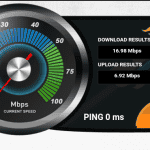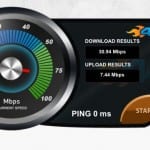Speeds aren’t getting faster, but 4G is coverage is expanding – OpenSignal
OpenSignal’s most recent State of LTE report claims that while download speeds across the world have started to plateau there is promising work being done to improve coverage.
February 21, 2018

OpenSignal’s most recent State of LTE report claims that while download speeds across the world have started to plateau there is promising work being done to improve coverage.
While this will frustrate urbanites wanting their cat video fix, farmers wanting to surf for images of milk will be thrilled.
The last couple of years have seen global 4G download speeds improve quite considerably, though some nations plodded along (the UK being one of those), but this trend has been slowing recently. While we might point the finger at lazy telcos who might be more interested in collecting profits than improving customer experience, they are generally improving geographical coverage. OpenSignal has said three quarters of the European countries included in the research can provide LTE connections to mobile users in more than 7 out of 10 attempts. Only Armenia, Belarus and Russia had average availability scores below 60%.
Perhaps even more encouraging is the fact the Western European nations have finally pulled their finger out and are now offering better availability, though users in France, Germany, Ireland and the UK don’t average download speeds above 25 Mbps. One possible explanation is the focus on 3G in these countries in years gone. Early and powerful deployment of 3G satisfied the data demands of the population for a significant amount of time meaning the consumer demand for 4G was delayed. This bit the telcos recently, though this negative position does seem to be turning.
Looking specifically at the UK, in November 2016 its availability score was 57.9% though this has increased to 77.3% in the most recent report. There have been a number of projects in the last 18 months to encourage investment in the not-spots, but this is an encouraging statistic to prove it is simply more than telcos and MPs preaching for PR points. Recently the government announced an initiative to use churches to house equipment to improve coverage and such moves will only keep these statistics moving north. There is still work to match the best in the world, and Europe (Norway’s coverage exceeds 90%) but the trends are positive.
It should be worth noting that the slow-down in speed increases is a global trend, but when you look at the European nations they are closing the gap with the leaders out in Asia. OpenSignal believes that if the Asian markets continue to stall while Europe continues to steadily grow, the distortion could be addressed before too long.
While reports such as this are important to measure whether the telcos are actually doing anything notable, we decided to run our own mini survey. Your correspondent asked several friends to conduct a short speed test in a variety of locations, and the results are quite interesting. The tests were taken at 3pm (Tuesday 20 January) from a mix of different environments including working from home, on the road, central London and the Welsh countryside.
 Sam in Cambridge on O2
Sam in Cambridge on O2
 Editor Scott Bicheno in Hertfordshire on EE
Editor Scott Bicheno in Hertfordshire on EE
 Rhys in Dulwich, London on O2
Rhys in Dulwich, London on O2
 Chris in Balham, London on O2
Chris in Balham, London on O2  Owen in Covent Garden, London (Indoor)
Owen in Covent Garden, London (Indoor)  Tim in Paddington, London (Indoor) on Three
Tim in Paddington, London (Indoor) on Three  Freddie in Cowbridge, South Wales on O2
Freddie in Cowbridge, South Wales on O2  Your correspondent in Hackney, London on Vodafone
Your correspondent in Hackney, London on Vodafone  Emily in Kensington, London on EE
Emily in Kensington, London on EE
About the Author
You May Also Like










.png?width=300&auto=webp&quality=80&disable=upscale)


_1.jpg?width=300&auto=webp&quality=80&disable=upscale)